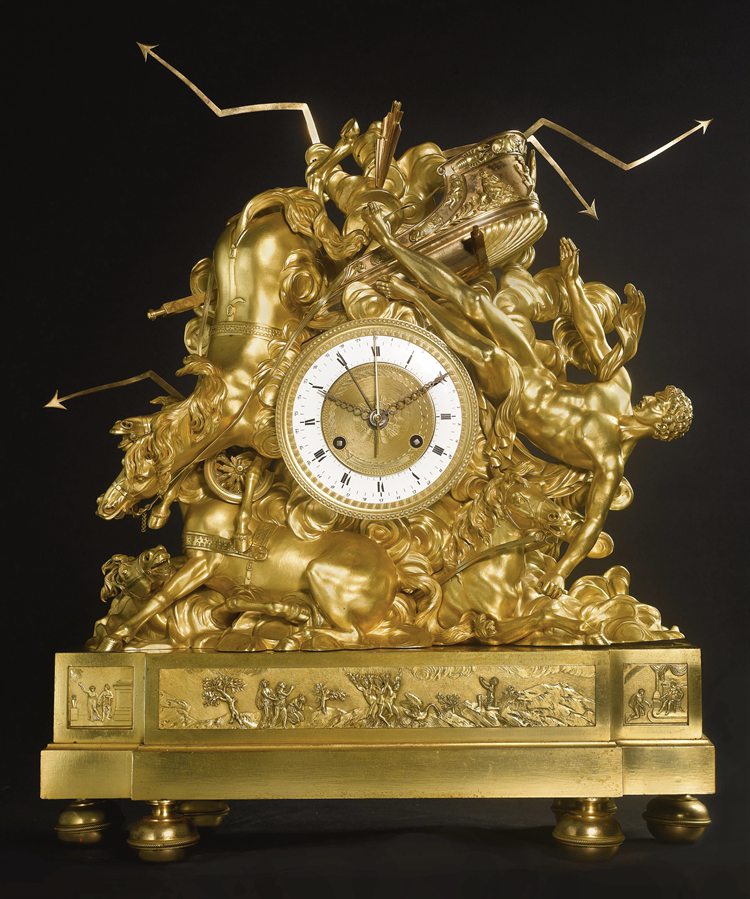
From carefully observing and examining some of the earliest clocks made, you will realize that for the makers, it was mostly about the craft itself and the intricacies involved. The Mantel Clocks are one of such unique antique pieces that combine mastery with elegance.
A Louis XVI ormolu Mantel clock from the late 18th century, designed by Pierre-Etienne Romain in Paris sold for $86,500 at a Sotheby’s auction in 2011.
Here we’ve put together every piece of knowledge you need to know to navigate the Antique Mantel clocks world; their history, types, identification process and how you can determine their value we will reveal.
Table of Contents
A Short History of the Mantel Clocks
The Mantel clocks have been around since the mid-1600s and while tracing their history, we found that the earliest clocks were large and more challenging to use. This difficulty made it necessary to introduce a new set of clocks, which we now call the Mantel clocks.
The royals in France had contracted clock makers to fashion a working, easy-to-handle table clock that would grace their house tables. This contract marked the beginning of the Mantel clocks. A well-known French clockmaker in the 1800s was the skillful Raingo Freres.
The first few tries were imperfect and it was not until the end of the 16th century that the clockmakers finally perfected the art of miniaturizing the big clocks. These clocks were often made from brass and featured the most decorative ornaments. Many even featured decorative figurines with musical tunes, making the Mantelpiece even more intriguing.
In addition to this, you would be surprised to discover that American-made Mantel pieces did not get as popular as the others until the early 1800s. The increase in popularity was born from the thoughtful thinking of Eli Terry, a Connecticut clockmaker, who started mass-producing Mantel pieces
The clocks before Eli Terry were made mainly using wood but his mass-produced pieces bore more semblance to the French kind, however, the only difference here was Terry would sometimes use veneers which made his work look more exotic than the others.
This move was a strategy to reduce the high cost of the older Mantel clocks and make them more affordable so that low-income earners could afford one.
The video below showcases what the American-made Mantel clocks look like.
How to Identify an Antique Mantel Clock
Identifying authentic antique Mantel clocks can be a bit tricky, since there are reproductions everywhere. However, it is not impossible and we are here to help out.
Identifying the Period Style
We know that the Mantel clocks originated in France in the 18th century. This period is the earliest period possible to date an antique Mantel. If you can figure out the time frame a maker produced a piece, you can confirm the style. Here are some significant periods.
The 1901 Trademark
Mantel clocks produced In 1901 carried the ‘anniversary’ trademark. This means if a Mantel clock does not have this trademark, it was most likely produced before this period.
Such pieces are likely from the French period or were likely American-made Mantel since American Mantel clock makers had begun making these Mantel clocks prior to 1901.
The 1836 Electroplating Method
A major distinguishing feature of antique Mantel clocks from 1836 is that the clock makers adopted the electroplating technique to coat the metal around the Mantel clocks.
So, if you do find that an antique Mantelpiece has an electroplating cover, it’s a sign that you can date it no earlier than 1836 when clockmakers first adopted this method.
The 1896 Importation Rule
Even as other countries began to adopt the Mantel style and produce styles that were distinct to them alone, people would still import the Mantel clocks. This is because many wanted their clocks to be different from the ones available in their country.
This was the same period mass production became popular, so it became necessary to identify where a piece originated from and this was an effective way to do so.
By 1896, it became a norm for makers to add the country a Mantelpiece originated from before they sent it out for export. This act was widespread until the makers’ names replaced it. A Mantel clock with a country’s name by the side is most likely from the 1800s.
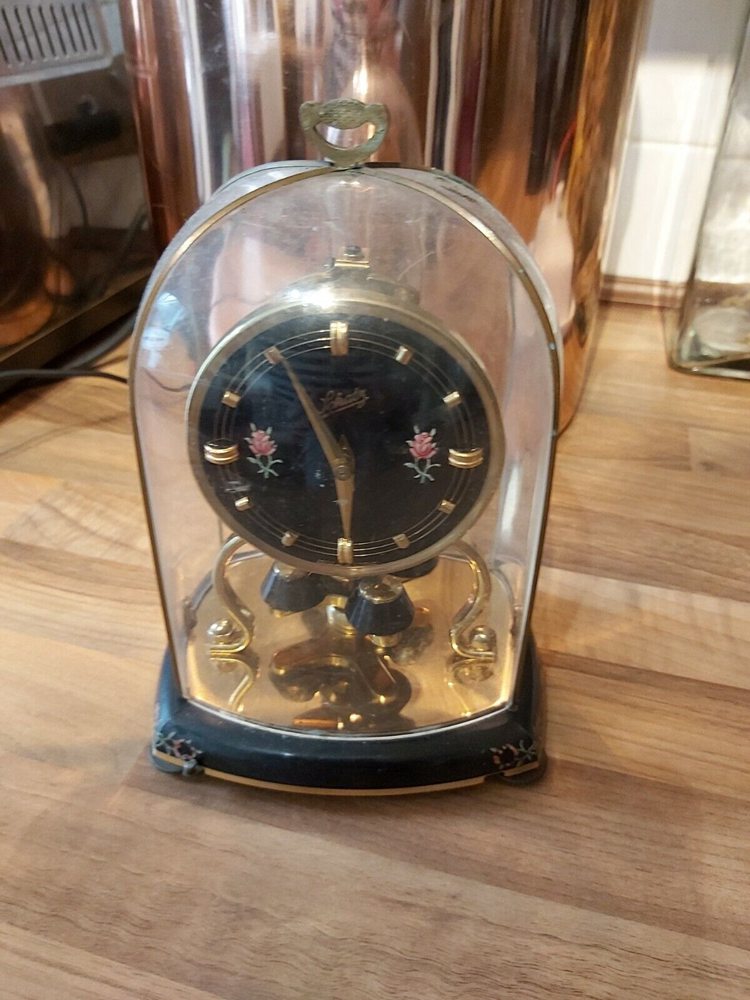
The 1850 Black Mantel
From the 1850s till the early 1900s, the most popular Mantel, primarily American made, was the black Mantel. Edward Ingraham produced them; and as the name implies, they were made of black-painted wood.
The clock dial was at the center with two key winds, one for time and the other for the striking hour. When identifying a black Mantel clock, the color is the first give away. However, you also have to focus on the other details on the clock.
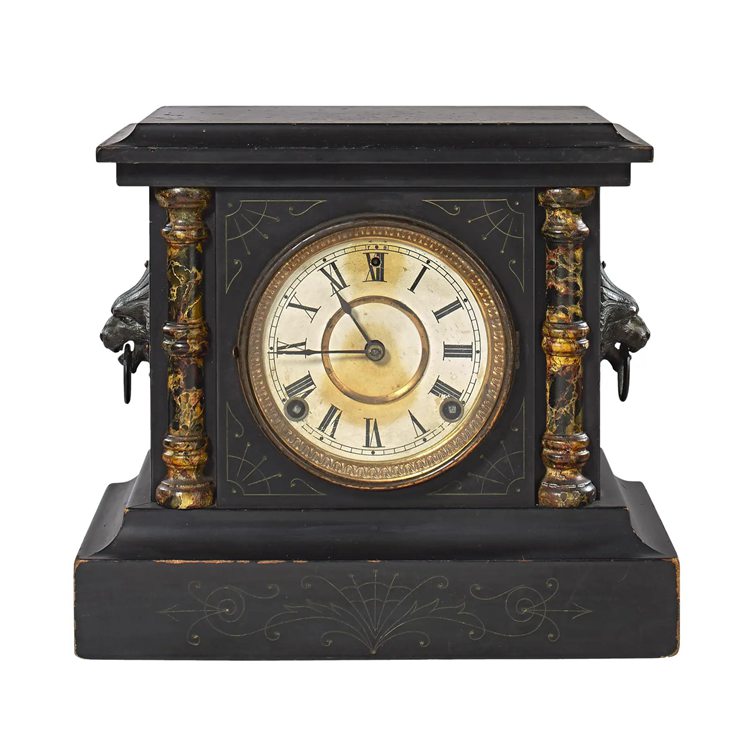
Identifying the Materials
This is yet another very efficient method you can adopt to verify the authenticity of antique Mantel clocks. Using materials to verify the authenticity of clocks is much easier because some materials were not available within a time period.
So, if you find a piece with a particular material, tracing the clock to when people used that material helps you know what to look for in an antique.
For this purpose, we will examine the common materials from which Mantel clocks are made and their origin.
Bronze/Brass
Many early designs of the Mantel clocks are formed using brass. The French royals wanted to glamorize their mansions and needed materials that would shine as the clocks sat on the fireplace.
The bronze and brass materials were easily the materials to look to for this, given their nature. The clockmakers from that time would forge the Mantel clocks using these materials to give them the exotic finishing their owners wanted.
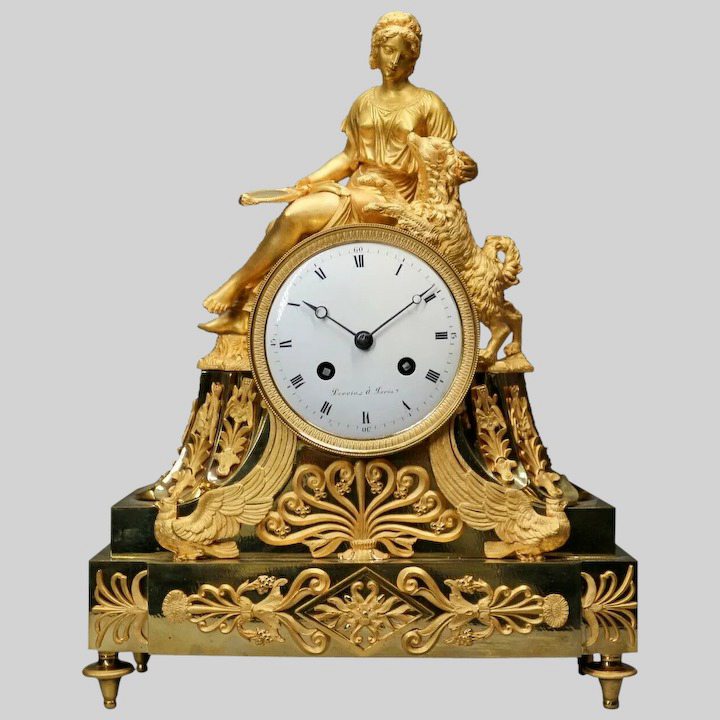
Wood
You will majorly find these materials on the American-made Mantel clocks. They were pretty popular from 1880-1931. The clockmakers would often smoothen out the wood, giving the clocks a cleaner appearance.
Common wood types used in forging these clocks are cherry, oakwood and mahogany, especially between 1820-1905. It was in 1905 that most clock makers decided to switch to plywood because of the neat finishing it gave the clocks.

Porcelain
By the turn of the 19th century, some clock makers began venturing into other materials to change the appearance of the Mantel clocks and make them look different. Porcelain is a fragile material, and this made this clock type rare.
Not all clockmakers could use this material because of its cost, which made it all the more expensive. One company that was able to venture into this risk is the Ansonia clock company.
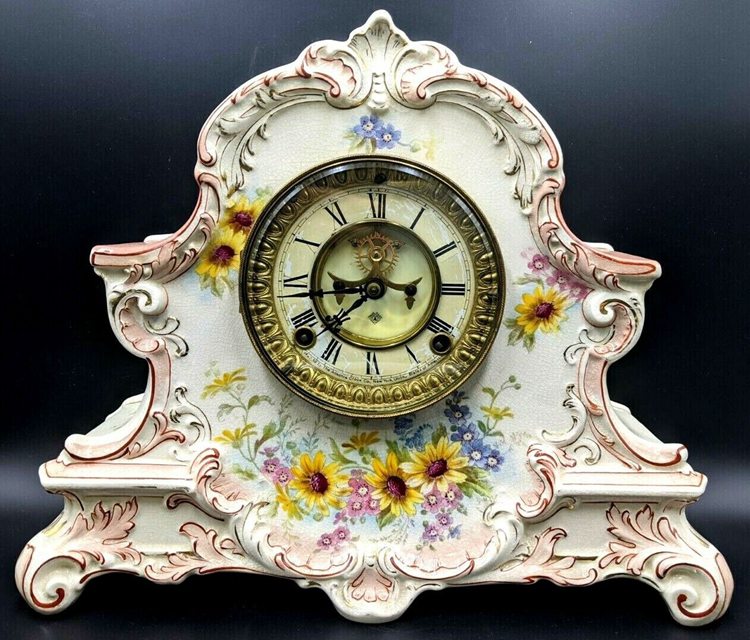
Stone
Clockmakers used this material to make stationery Mantel clocks fixed in public spaces. It was an acceptable means of design and was popular in France. They would use stones like slates, marbles or onyx to create the clock.
The clocks are often made without handles because these materials are heavy and would not need to be moved around so much because they would serve a static design purpose.

Metal
Manufacturers used this material for portable shelves or Mantel clocks. It fits into any home décor because of its simple curves and metal lines.
You can also use it as a simple table shelf. This material made it easier for many to integrate the Mantel clock into the home décor, even without a fireplace.
It is rare for any collector to have an antique metal Mantel clock because it was not until the 20th century that this material became popular. There are only vintage types.

Plastic
After the 1930s, clockmakers turned to plastic to make Mantel clocks. This move was because it came with a shinier finishing and it was generally cheaper to produce. Producers used materials like bakelite and Catalin to form the clocks.
It is almost impossible to find any antique plastic Mantel because the plastic material is a recent development, so you should observe the material well. Sometimes, these materials can bear similarities with a material like the onyx.

Identifying the Movement
When referring to clocks, movement means the system by which the clocks operate. Understanding the movement of a Mantel clock is an efficient way to identify one.
Antique Mantel clocks work on the mechanical design and sometimes the quartz as opposed to the battery-powered movement. This fact means that occasionally, you have to wind up the antique Mantel clock with a key.
Typically, most antique Mantel pieces need winding every eight days. However, some rare pieces can take up to fourteen days or even thirty days but naturally, you can expect those designs to cost more.
Note that the types of antique Mantel clocks are a result of their movement which can either be the mechanical kind or quartz. The mechanical Mantel clock came with the first production but quartz became popular during the era of mass production.
Identifying the Manufacturer
Manufacturers of the antique Mantel clocks would often add their names to the face of the clock. This move is the easiest way to determine the manufacturer of a Mantel.
Although not every antique Mantel has the name of the manufacturer on the face of the clock and in such cases, other methods of identification become necessary.
Notable antique Mantel clocks that you can look out for include
- Raingo Fres
- Howell & James
- Jacob Petit
- Japy & Cie
- Seth Thomas
- Eli Terry
Consulting verified Sources
Beginners may find it hard to correctly identify a Mantelpiece alone, making it wise to consult outside sources to assist in determining an authentic Mantel clock. You can do this by consulting an appraiser or going through books or guides that can help you.
Some directories you can refer to are:
Antique Clocks Identification and Price Guide
Portable Mantel and Table Clocks
For appraisals, you can always check out a trustworthy and professional appraiser like Mearto.
What Determines the Value of an Antique Mantel Clock
It is not enough to know that a Mantel clock is antique; you should be able to point out certain factors that can affect the value. Little differences can affect your Mantelpiece positively or negatively when pointed out.
Some of these differences are:
Design
The design of an antique Mantelpiece is one of the most important details you should pay attention to when valuing a Mantel clock. You can expect that a piece with more details and technicality in its design will be priced higher than the simpler ones.
It is common for the French Mantel clocks to have more detailed designs because the clockmakers from that period structured the pieces for the royals intending to beautify their houses.
The chime design is an example. Clockmakers would often add one to three holes to a clock, one for winding, the second for a chime every hour and a half hour and the third for a melody that comes with the chime.
A clock with these three holes is more valuable than one with just one or two holes.
Another reason the designs will affect the value is that manufacturers will use more materials to get a particular look for a design. This is bound to increase the cost of production and the total value.
Movement
Movement is very crucial when you need to determine the final value of a Mantelpiece. The movement is the system the clock’s mechanism works on, making it essential.
Naturally, a movement that operates with the key winding will cost more than a battery-operated one.
These key-operated clocks can last for eight, fourteen or thirty days. Depending on how long the movement can last, it is likely to be much higher than the others that last for a shorter period.
Condition
Like every other item, an antique Mantel clock in terrible condition will not be valued for a high price. This factor is why it is crucial for collectors to carefully examine an item before purchasing the item.
There is a tendency for the Mantel with fragile materials like glass or marble to break or crack and this will negatively affect the value. Wooden Mantel clocks also tend to chip or fade, affecting the piece’s appearance.
A piece that has been restored or has had several parts of the body replaced will not cost much in any antique market. These factors have to be considered before you purchase any piece.
An antique Mantel clock in good condition will have its original parts intact, including the pendulum and clock hands, and not damaged.
Preference
Preference is usually a result of style, especially for collectors that intend to integrate a Mantel clock into their home décor.
If the style of a Mantelpiece does not fit, chances are not many will be willing to purchase it and as a result of the demand and supply law, the piece will not sell for as high as the buyer may have hoped.
Age
Mantel clocks have been around for a while, which means some are a little older than others. Discovering a Mantelpiece from the first set created will be an incredible find.
Whoever owns such a piece can be sure they are sitting on a fortune, especially a very old one in good condition. Older pieces will also cost more if they were produced before the age of mass production.
Rarity
Limited edition Mantel clocks are guaranteed to have a higher value since we do not have many of them in circulation. One-time pieces are rare; this rarity is a significant determinant when valuing a Mantelpiece.
Special features make a Mantel clock rare, like a clock with numbered faces or one with a day and date display. These features are not common in many antique Mantel clocks, making them more unique.
Rare Mantel pieces are commonly those before the age of Eli Terry and his mass production of Mantel clocks. In identifying a rare piece, you should trace the period a producer made the Mantelpiece.
Price Comparison
Many times, when a collector is in possession of an antique piece, especially a beginner, they tend to go online and search for items that are similar to the piece they are looking to sell and by doing this, they come up with an idea on the value of their piece.
The idea you can get by comparing the prices of antique Mantel clocks may not always be accurate because you have not examined the sold clock. However, it gives a rough estimate which tends to pass as the value of your piece.
This way, you are not clueless when the time comes to value your antique because you already have an idea of how much the piece can sell.
Appraisals
Appraisals are a reliable way of not only verifying your antique items but also an effective way to determine the final value of your antique Mantelpiece. An appraiser can study your Mantelpiece and determine the most reasonable price for the clock.
Many beginner collectors find it hard to determine their antique piece’s actual value successfully, making it necessary to consult an appraiser. You can visit Mearto for a quick appraisal of your item.
It is vital to visit a trusted appraiser so you do not fall victim to any scam and get ripped.
5 Most Valuable Antique Mantel Clocks
Below is a list of some of the most valuable antique Mantel clocks sold in auctions. These items have been verified from reputable sources and remain some of the most valuable antique pieces.
S/N |
Mantel Clocks |
Year |
Price |
1. |
Pierre-Francois Feuchere Empire Ormolu Marble Mantel Clock |
1810 |
$40,000 |
2. |
Antique Mantel Boulle Clock |
1870 |
$32,000 |
3. |
French Gilt Bronze Falling Ball Mantel Clock |
1890 |
$24,800 |
4. |
George Washington Clock by Mallet |
1820 |
$10,240 |
5. |
James Tregent George III Bracket Clock |
1780 |
$4,608 |
5. James Tregent George III Bracket Clock
Release Date: 1780
Year: $4,608
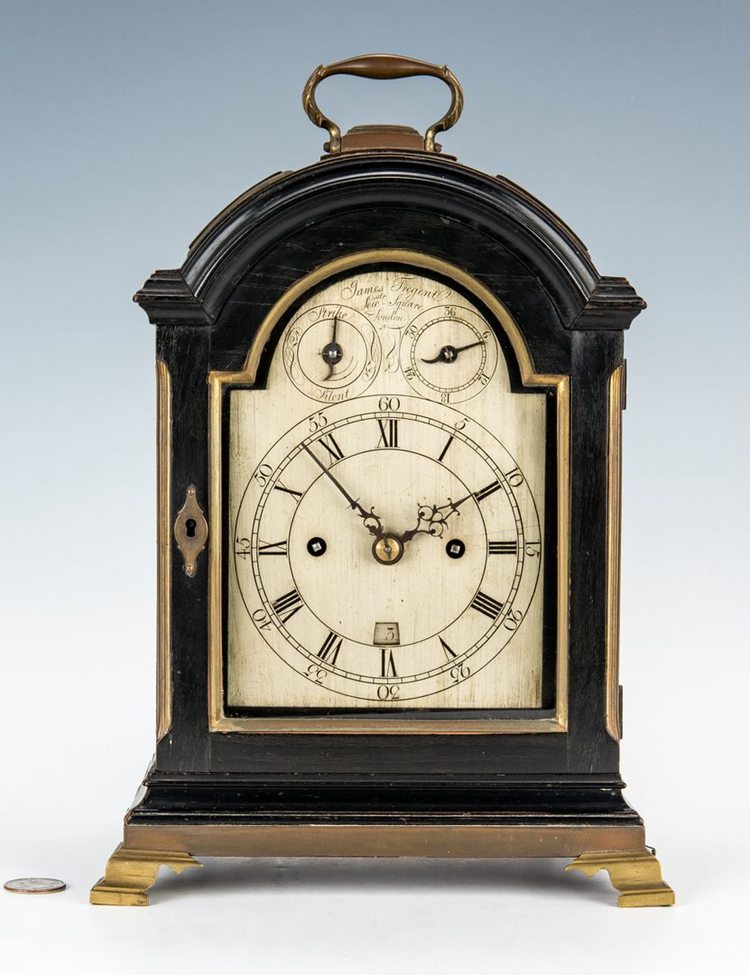
This piece is a collectible from the estate of the notable architect Clarence Mack and was designed by James Tregent. It is an eight days movement clock with a bell chime and a wooden mahogany case.
Produced in 1780, with one of its sides glued, this Mantel clock sold for $4,608 as a result of its history and the many estates it has graced.
4. George Washington Clock by Mallet
Year: 1820
Price: $10,240
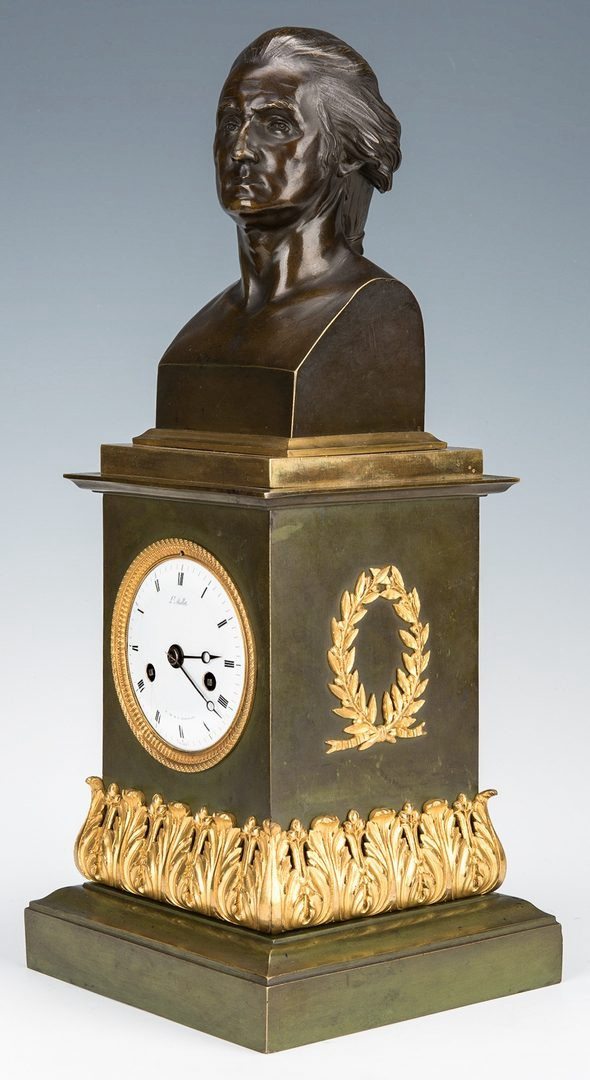
Louis Mallet was a clockmaker to the duke of Orleans in Paris and during his time, earned the title of “Horloger de M. Le Duc d’Orleans.” He was responsible for producing different versions of the Mantel clocks carrying the George Washington head.
The sellers mainly targeted these clock types at the American market. This particular piece is one of his famous designs. It has a classical gold-painted body and a patinated bronze appearance.
This rare item sold for $10,240 at the historic winter fine art and antiques auction.
3. French Gilt Bronze Falling Ball Mantel Clock
Year: 1890
Price: $24, 800
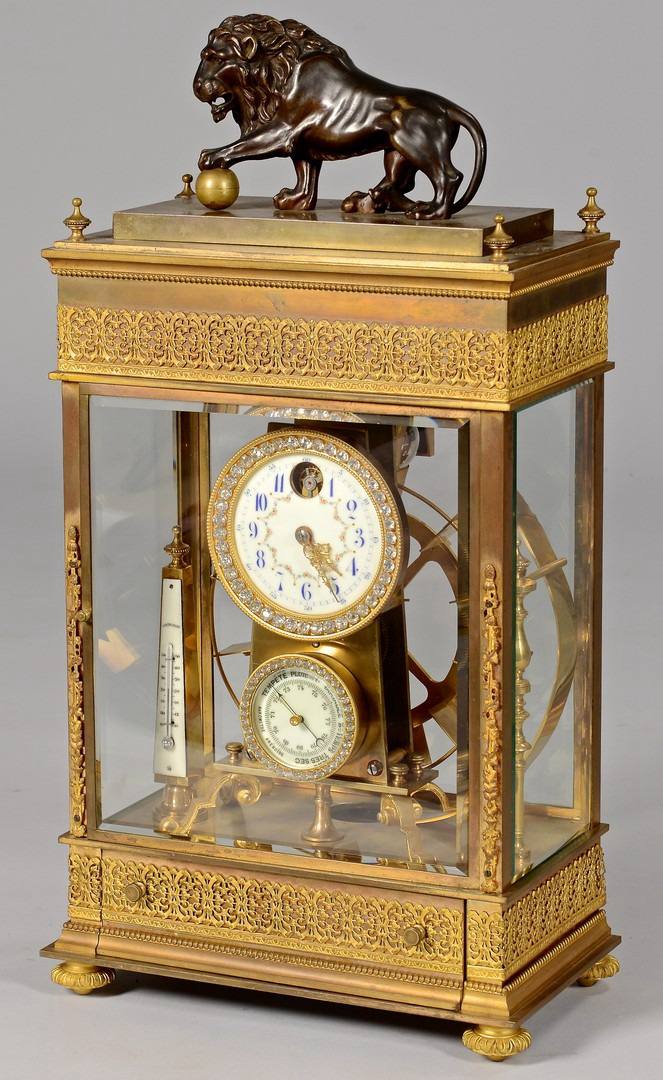
The beauty and skillful design of the French Mantel clock is a major reason it is one of the most valuable kinds. This piece, also referred to as the falling ball is a French design and features a lion and a rolling ball on top.
It features a barometer and a thermometer that dials up its value, a glass frame and bronze decorative ornaments. The design was trendy in the Spanish market, and this piece sold in 2015, surpassing its estimated bid.
2. Antique Mantel Boulle Clock
Year: 1870
Price: $32,000
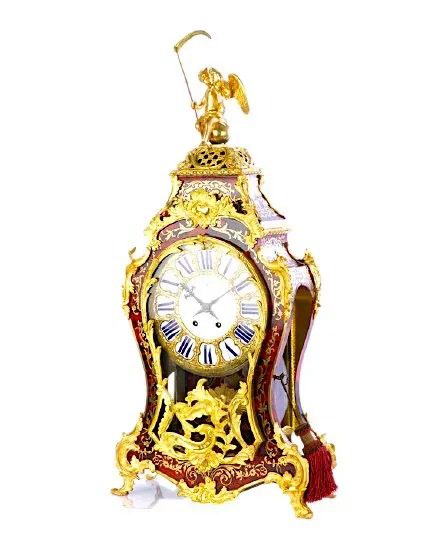
This item is made of painted wood and bronze. This piece is one of the many illustrations of French cabinetmaker André-Charles Boulle, one of the earliest and most distinguished furniture decorators.
During his lifetime, he was awarded the title of cabinetmaker and sculptor to the king of France, Louis XIV, making him a very popular artist.
Therefore, it is no surprise that a Mantel clock illustrated using his designs, style and artistic signature is one of the most valuable Mantel pieces today—this piece sold at the Janus antiques auction gallery in 2020.
1. Pierre-Francois Feuchere Empire Ormolu Marble Mantel Clock
Year: 1810
Price: $40,000
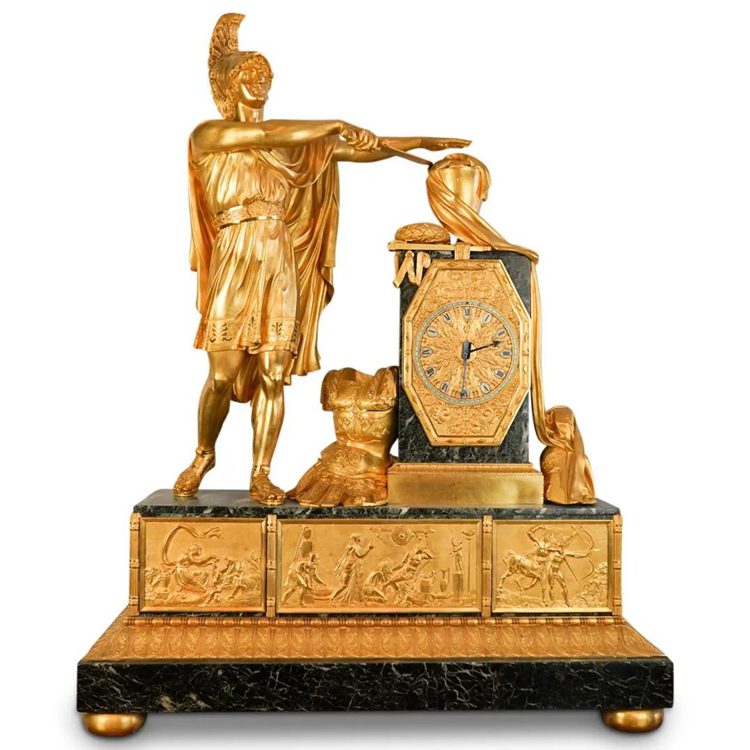
The model for this design was first created in 1807 by Pierre-Francois Feuchere in France. It is of exceptional design depicting Achilles swearing his revenge at the remains of Patroclus.
The auction house in possession of this piece was Sotheby’s auction house until they sold it to Akiba antiques in 2015. Akiba then auctioned the Mantelpiece in 2020 and the bronze antique piece sold for $40,000 at its final bid.
Final Thoughts
The antique Mantel clocks are undeniably a significant part of the clockwork industry which is why an authentic antique piece can be worth a lot. Do not forget that you have to look out for some factors that will help you determine the right price. Some of them are:
- The movement of the Mantel clock
- The condition of the Mantel clock is before the valuation
- How rare that particular piece is as a collectible

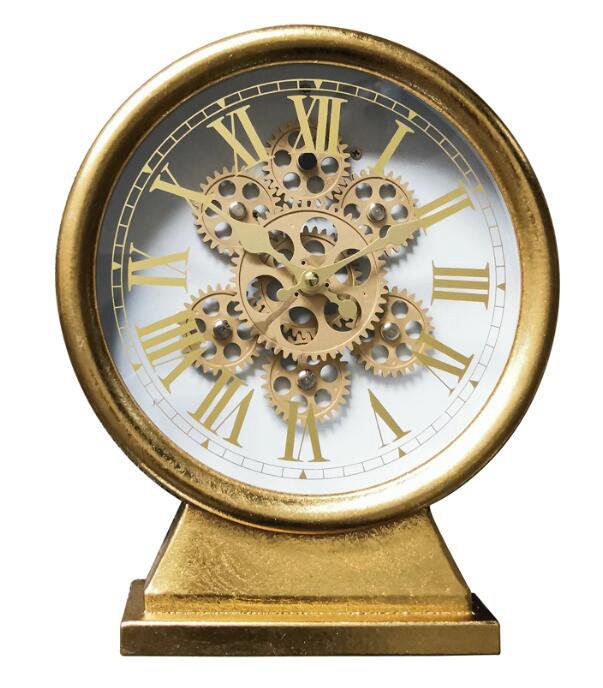




![Where To Sell Antique Furniture In 2022 [Ultimate Guide]](https://www.jacquelinestallone.com/wp-content/uploads/2022/09/Etsy-Your-Place-To-Buy-And-Sell-All-Things-Handmade-600x450.jpg)


